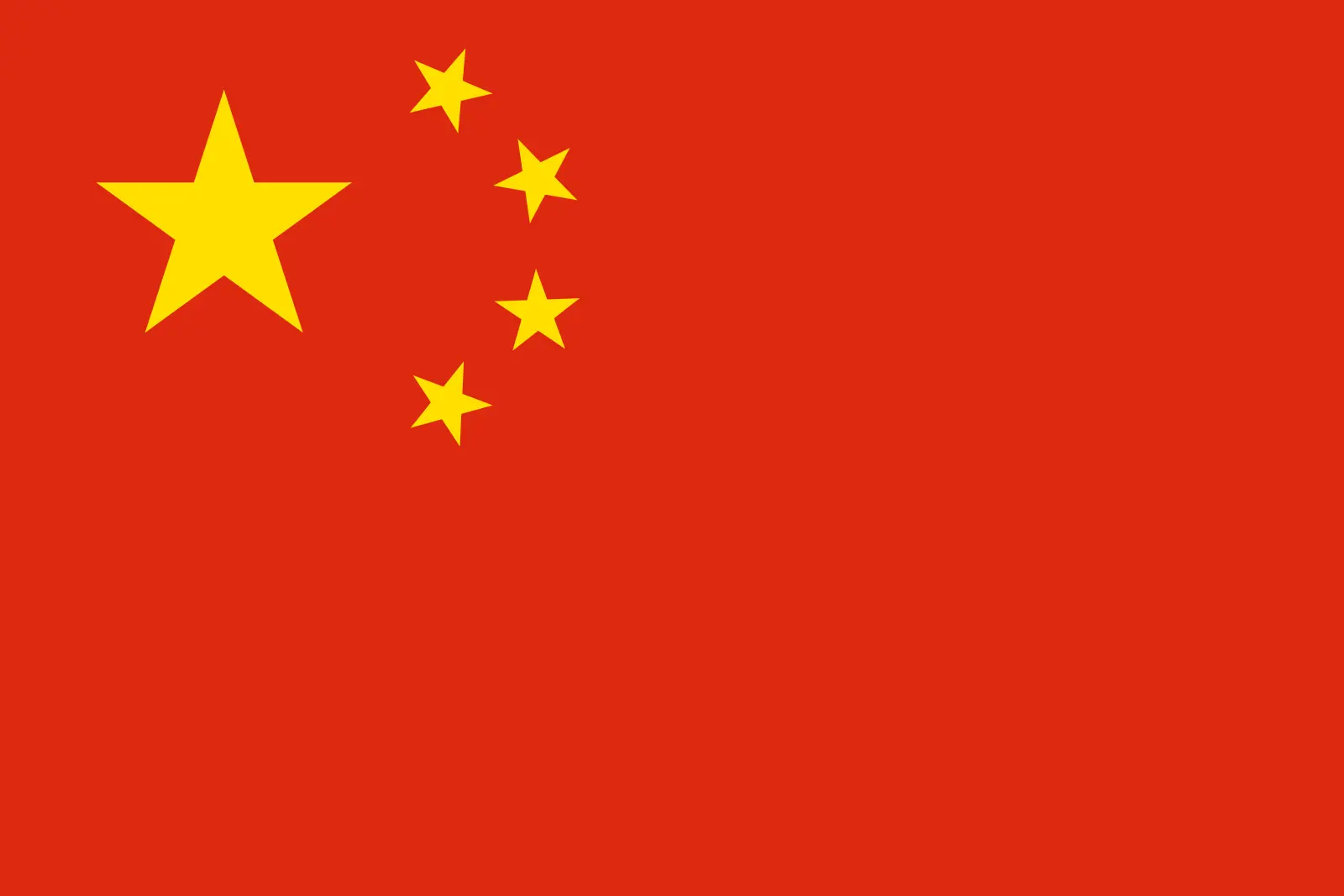Global Market Size, Forecast and Trend Highlights Over 2025-2037
Power Semiconductor Market size was valued at USD 53 billion in 2024 and is expected to secure a valuation of USD 97.4 billion in 2037, expanding at a CAGR of 4.8% during the forecast period, i.e., 2025-2037. In 2025, the industry size of power semiconductor is estimated at USD 55.5 billion.
The continuous developments in Industry 4.0 are driving manufacturers to implement automation technology which is expected to substantially increase the demand for power semiconductors. These semiconductor materials ensure reliable power distribution and enhance efficiency and optimization within robotics applications, industrial machines, and automated factories. Power distribution is reliable as these semiconductors process high voltage and current effectively and allow manufacturers to increase their operational performance and scale their operations. Industrial automation development depends on power semiconductor technologies to develop energy-efficient smart factories with real-time monitoring capabilities that optimize automated workflows according to present manufacturing requirements of high-performance solutions.
Recognizing the industry shift, Delta Electronics, in December 2024, joined forces with Cal-Comp Electronics to develop industrial automation within the electronics manufacturing services industry segment. The collaboration between these companies targets three main areas, including better operational efficiency, sustainable production, and the implementation of future power semiconductor solutions. The companies are expected to use next-generation power technologies to develop automation systems that combine reduced energy usage with system reliability improvements.
Power Semiconductor Market: Growth Drivers and Challenges
Growth Drivers
- Government investments and initiatives: The rising demand in automotive, consumer electronics, and telecommunications sectors is strengthening the requirement for a supply chain. The investors are receiving substantial support through funding initiatives combined with regulatory support along with incentives to establish new fabrication facilities to develop research facilities and workforce. Governments are launching suitable initiatives for local semiconductor production centers to prevent supply chain disruptions and establish their role in global semiconductor business leadership while safeguarding national security.
- Proliferation of electric vehicles: Power semiconductors enable the electrical energy conversion and control process inside EV systems to achieve maximum energy utilization and longer driving distances. The accelerating EV market requires advanced power semiconductor solutions, owing to their ability to directly address critical benchmarks for efficiency and performance needs. A notable development in this sector includes the strategic partnership between Stellantis and Infineon Technologies in November 2024 to improve power distribution for the automobile manufacturer's upcoming electric vehicle design. The collaboration between the players focuses on integrating silicon carbide semiconductors, which is anticipated to enhance the vehicle's performance while improving energy efficiency and increasing driving range. The company is establishing supply and capacity deals with these advanced components to achieve standardized power modules throughout its complete electric vehicle range while demonstrating dedication to power conversion and distribution technologies.
Challenges
- Complexity in design and integration: Power semiconductors require complex design solutions for their use in electric vehicles and industrial automation systems and renewable energy applications. Each component demands rigorous specifications regarding efficiency together with thermal management characteristics and performance metrics for compatibility across present power architectures. Advanced engineering techniques fail to handle heat removal processes while handling power loss reduction and fast switching optimization requirements. The requirement for application-specific design solutions elevates development expenses and implementation delays, thereby keeping the power semiconductor market growth pace restricted.
- Slow transition from silicon to wide bandgap materials: The industrial transition from silicon to wide bandgap materials including silicon carbide and gallium nitride remains at a slow pace, attributed to its expensive production and difficult manufacturing along with immature supply chains. WBG semiconductors outperform with high efficiency, yet managing their expensive components and complicated manufacturing barriers make them ineligible for extensive market adoption. Various industries maintain their use of silicon-based semiconductors as these well-established and cost-effective technologies maintain a favorable position over wide bandgap technology deployment.
Power Semiconductor Market: Key Insights
| Report Attribute | Details |
|---|---|
|
Base Year |
2024 |
|
Forecast Year |
2025-2037 |
|
CAGR |
4.8% |
|
Base Year Market Size (2024) |
USD 53 billion |
|
Forecast Year Market Size (2037) |
USD 97.4 billion |
|
Regional Scope |
|
Power Semiconductor Segmentation
By Component (Discrete, Module, Power Integrated Circuits)
Power integrated circuits segment is estimated to capture power semiconductor market share of over 50.2% by 2037, owing to the rising implementations of next-generation mobile networks with a particular emphasis on 5G. The continuous rollout of 5G infrastructure necessitates power ICs that operate with high performance and efficiency as they support base stations, network equipment, and small cells. The circuits operate as essential components that control power distribution while regulating voltage and optimizing thermal performance to support the uninterrupted operation of fast data transmission systems.
The increasing adoption of smart connected devices together with edge computing, is anticipated to propel the demand for power ICs due to their ability to provide power management and compact high-performance designs. Power ICs are all set to experience growing adoption due to strategic business agreements coupled with technological developments. Honeywell and NXP Semiconductors extended their strategic partnership in January 2025 to integrate advanced power ICs for enhancing aviation product development to enhance energy efficiency and system performance in upcoming aviation technology.
Material (Gallium Nitride, Silicon/Germanium, Silicon Carbide)
The silicon/germanium segment in power semiconductor market is expected to register significant revenue during the forecast period, attributed to improved electronic applications that rely on high-frequency and high-speed operations. Despite their high electron mobility and low noise characteristics, the silicon-germanium materials serve best in radio frequency and microwave technologies. The continuous demand for 5G infrastructure, along with satellite communications, is expected to foster the adoption of SiGe-based power semiconductors.
The automotive industry's ADAS and autonomous vehicle development requires rapid data processing, further driving the manufacturers to integrate SiGe components in automotive electronic systems. The SiGe is anticipated to grow extensively due to investments as well as strategic partnerships. In March 2022, GlobalFoundries partnered with Cisco Systems to develop tailor-made silicon photonics products using SiGe materials to enhance data center networking operations.
Our in-depth analysis of the global power semiconductor market includes the following segments:
|
Component |
|
|
Material |
|
|
End use |
|

Vishnu Nair
Head - Global Business DevelopmentCustomize this report to your requirements — connect with our consultant for personalized insights and options.
Power Semiconductor Industry - Regional Scope
Asia Pacific Market Analysis
By 2037, Asia Pacific power semiconductor market is set to capture over 42.4% revenue share, attributed to rapid industrial development and continually expanding electric vehicle adoption. China, Japan, and India are leading the EV production as they require innovative power semiconductor solutions to boost power management abilities and maximize battery performance. Governments are actively implementing semiconductor production through financial incentives combined with subsidies to build domestic production and create stronger regional supply networks. Moreover, the power semiconductor market is witnessing robust expansion, owing to the increasing demand for consumer electronics and telecommunications infrastructure. The installation of broad 5G network systems depends on sophisticated power semiconductor components to maintain signal consistency while optimizing power consumption and heat regulation systems.
The power semiconductor market in China is experiencing a significant expansion due to rapid advancements in 5G infrastructure and data centers in the country. New 5G network implementation requires high-performance power semiconductor systems to properly manage voltage and power delivery within telecom base stations as well as cloud computing facilities. The continual expansion in the country’s digital economy is creating a need for next-generation communication networks to adopt advanced semiconductors due to efficient power management solutions.
The power semiconductor market in India highlights a robust expansion due to increasing investments in domestic manufacturing and strategic business agreements. One such example is Micron Technology’s plan to set up a semiconductor assembly and test facility in Gujarat in June 2023 for producing DRAM and NAND products. The strategic initiative works in synergy with India's national objectives regarding the growth of its semiconductor industry and import reduction strategy. India has defined its mission to become a prominent member of worldwide semiconductor operations through local manufacturing strength that enables innovative power semiconductor solutions for consumer electronics and automotive as well as telecommunications sectors.
North America Market
The North America power semiconductor market is expected to witness a significant expansion during the forecast period due to the implementation of ADAS and electric vehicle technology by automotive industries. Automakers in the region are speeding up their transition to electric vehicles and autonomous driving technologies, owing to the market requirement for efficient power semiconductors, particularly those that are built with silicon carbide and gallium nitride solutions.
The power semiconductor market in the U.S. is increasing rapidly, attributed to partnerships and collaborations between companies to bolster domestic power semiconductor manufacturing capacity. Bosch reached a preliminary agreement with the U.S. Commerce Department in December 2024, to receive maximum subsidies of USD 225 million, to enable the production of silicon carbide power semiconductors in Roseville California facilities. The allocated funding is expected to enable Bosch to carry out its USD 1.9 billion investment for SiC production at its Roseville facility that targets electric vehicles and additional product applications.
The Canada power semiconductor market is expected to experience significant growth, as the local government is bolstering its semiconductor structure by making substantial research and development expenditures. With its USD 120 million commitment in July 2024, the government funded the Fabrication of Integrated Components for the Internet’s Edge (FABrIC) project that CMC Microsystems has directed for five years. The project functions are anticipated to improve domestic semiconductor production together with commercialization. The FABrIC project is aimed at strengthening the country’s position in the worldwide semiconductor distribution network with the support of advanced microchip development and manufacturing processes.
Companies Dominating the Power Semiconductor Market
- Infineon Technologies
- Company Overview
- Business Strategy
- Key Product Offerings
- Financial Performance
- Key Performance Indicators
- Risk Analysis
- Recent Development
- Regional Presence
- SWOT Analysis
- Texas Instruments Inc.
- United Silicon Carbide Inc.
- ON Semiconductor Corporation
- Broadcom Inc.
- ST Microelectronics NV
- NXP Semiconductor Inc.
- Semikron International
- Hitachi America, Ltd.
- Wolfspeed Inc
- Vishay Intertechnology Inc.
- Nexperia BV
- Alpha & Omega Semiconductor
- Magnachip Semiconductor Corp
- Maxpower Semiconductor
- Power Semiconductors, Inc
- Microchip Technology Inc
- Littlefuse Inc.
The competitive landscape of the power semiconductor market is rapidly evolving, attributed to the integration of advanced technologies in the industry by key players. They are focused on developing new technologies and products catering to the stringent regulatory norms and consumer demand. These key players are adopting several strategies such as mergers and acquisitions, joint ventures, partnerships, and novel product launches to enhance their product base and strengthen their market position. Here are some key players operating in the global power semiconductor market:
Recent Developments
- In June 2024, Infineon Technologies AG introduced the CoolGaN Transistor 700 V G4 product family. The device is a combination of electrical characteristics as well as packaging that is expected to enhance performance in various applications, including consumer chargers and notebook adapters, data center power supplies, and battery storage, among others.
- In August 2023, ROHM developed power stage ICs with built-in 650V GaN HEMTs and gate drivers. The devices are meant for primary power supplies inside industrial as well as consumer applications, including data servers and AC adapters.
- Report ID: 7303
- Published Date: Mar 06, 2025
- Report Format: PDF, PPT
- Get detailed insights on specific segments/region
- Inquire about report customization for your industry
- Learn about our special pricing for startups
- Request a demo of the report’s key findings
- Understand the report’s forecasting methodology
- Inquire about post-purchase support and updates
- Ask About Company-Level Intelligence Additions
Have specific data needs or budget constraints?
Frequently Asked Questions (FAQ)
Power Semiconductor Market Report Scope
FREE Sample Copy includes market overview, growth trends, statistical charts & tables, forecast estimates, and much more.
Connect with our Expert
See how top U.S. companies are managing market uncertainty — get your free sample with trends, challenges, macroeconomic factors, charts, forecasts, and more.
 Inquiry Before Buying
Inquiry Before Buying


 Afghanistan (+93)
Afghanistan (+93)
 Åland Islands (+358)
Åland Islands (+358)
 Albania (+355)
Albania (+355)
 Algeria (+213)
Algeria (+213)
 American Samoa (+1684)
American Samoa (+1684)
 Andorra (+376)
Andorra (+376)
 Angola (+244)
Angola (+244)
 Anguilla (+1264)
Anguilla (+1264)
 Antarctica (+672)
Antarctica (+672)
 Antigua and Barbuda (+1268)
Antigua and Barbuda (+1268)
 Argentina (+54)
Argentina (+54)
 Armenia (+374)
Armenia (+374)
 Aruba (+297)
Aruba (+297)
 Australia (+61)
Australia (+61)
 Austria (+43)
Austria (+43)
 Azerbaijan (+994)
Azerbaijan (+994)
 Bahamas (+1242)
Bahamas (+1242)
 Bahrain (+973)
Bahrain (+973)
 Bangladesh (+880)
Bangladesh (+880)
 Barbados (+1246)
Barbados (+1246)
 Belarus (+375)
Belarus (+375)
 Belgium (+32)
Belgium (+32)
 Belize (+501)
Belize (+501)
 Benin (+229)
Benin (+229)
 Bermuda (+1441)
Bermuda (+1441)
 Bhutan (+975)
Bhutan (+975)
 Bolivia (+591)
Bolivia (+591)
 Bosnia and Herzegovina (+387)
Bosnia and Herzegovina (+387)
 Botswana (+267)
Botswana (+267)
 Bouvet Island (+)
Bouvet Island (+)
 Brazil (+55)
Brazil (+55)
 British Indian Ocean Territory (+246)
British Indian Ocean Territory (+246)
 British Virgin Islands (+1284)
British Virgin Islands (+1284)
 Brunei (+673)
Brunei (+673)
 Bulgaria (+359)
Bulgaria (+359)
 Burkina Faso (+226)
Burkina Faso (+226)
 Burundi (+257)
Burundi (+257)
 Cambodia (+855)
Cambodia (+855)
 Cameroon (+237)
Cameroon (+237)
 Canada (+1)
Canada (+1)
 Cape Verde (+238)
Cape Verde (+238)
 Cayman Islands (+1345)
Cayman Islands (+1345)
 Central African Republic (+236)
Central African Republic (+236)
 Chad (+235)
Chad (+235)
 Chile (+56)
Chile (+56)
 China (+86)
China (+86)
 Christmas Island (+61)
Christmas Island (+61)
 Cocos (Keeling) Islands (+61)
Cocos (Keeling) Islands (+61)
 Colombia (+57)
Colombia (+57)
 Comoros (+269)
Comoros (+269)
 Cook Islands (+682)
Cook Islands (+682)
 Costa Rica (+506)
Costa Rica (+506)
 Croatia (+385)
Croatia (+385)
 Cuba (+53)
Cuba (+53)
 Curaçao (+599)
Curaçao (+599)
 Cyprus (+357)
Cyprus (+357)
 Czechia (+420)
Czechia (+420)
 Democratic Republic of the Congo (+243)
Democratic Republic of the Congo (+243)
 Denmark (+45)
Denmark (+45)
 Djibouti (+253)
Djibouti (+253)
 Dominica (+1767)
Dominica (+1767)
 Dominican Republic (+1809)
Dominican Republic (+1809)
 Timor-Leste (+670)
Timor-Leste (+670)
 Ecuador (+593)
Ecuador (+593)
 Egypt (+20)
Egypt (+20)
 El Salvador (+503)
El Salvador (+503)
 Equatorial Guinea (+240)
Equatorial Guinea (+240)
 Eritrea (+291)
Eritrea (+291)
 Estonia (+372)
Estonia (+372)
 Ethiopia (+251)
Ethiopia (+251)
 Falkland Islands (+500)
Falkland Islands (+500)
 Faroe Islands (+298)
Faroe Islands (+298)
 Fiji (+679)
Fiji (+679)
 Finland (+358)
Finland (+358)
 France (+33)
France (+33)
 Gabon (+241)
Gabon (+241)
 Gambia (+220)
Gambia (+220)
 Georgia (+995)
Georgia (+995)
 Germany (+49)
Germany (+49)
 Ghana (+233)
Ghana (+233)
 Gibraltar (+350)
Gibraltar (+350)
 Greece (+30)
Greece (+30)
 Greenland (+299)
Greenland (+299)
 Grenada (+1473)
Grenada (+1473)
 Guadeloupe (+590)
Guadeloupe (+590)
 Guam (+1671)
Guam (+1671)
 Guatemala (+502)
Guatemala (+502)
 Guinea (+224)
Guinea (+224)
 Guinea-Bissau (+245)
Guinea-Bissau (+245)
 Guyana (+592)
Guyana (+592)
 Haiti (+509)
Haiti (+509)
 Honduras (+504)
Honduras (+504)
 Hong Kong (+852)
Hong Kong (+852)
 Hungary (+36)
Hungary (+36)
 Iceland (+354)
Iceland (+354)
 India (+91)
India (+91)
 Indonesia (+62)
Indonesia (+62)
 Iran (+98)
Iran (+98)
 Iraq (+964)
Iraq (+964)
 Ireland (+353)
Ireland (+353)
 Isle of Man (+44)
Isle of Man (+44)
 Israel (+972)
Israel (+972)
 Italy (+39)
Italy (+39)
 Jamaica (+1876)
Jamaica (+1876)
 Japan (+81)
Japan (+81)
 Jersey (+44)
Jersey (+44)
 Jordan (+962)
Jordan (+962)
 Kazakhstan (+7)
Kazakhstan (+7)
 Kenya (+254)
Kenya (+254)
 Kiribati (+686)
Kiribati (+686)
 Kuwait (+965)
Kuwait (+965)
 Kyrgyzstan (+996)
Kyrgyzstan (+996)
 Laos (+856)
Laos (+856)
 Latvia (+371)
Latvia (+371)
 Lebanon (+961)
Lebanon (+961)
 Lesotho (+266)
Lesotho (+266)
 Liberia (+231)
Liberia (+231)
 Libya (+218)
Libya (+218)
 Liechtenstein (+423)
Liechtenstein (+423)
 Lithuania (+370)
Lithuania (+370)
 Luxembourg (+352)
Luxembourg (+352)
 Macao (+853)
Macao (+853)
 Madagascar (+261)
Madagascar (+261)
 Malawi (+265)
Malawi (+265)
 Malaysia (+60)
Malaysia (+60)
 Maldives (+960)
Maldives (+960)
 Mali (+223)
Mali (+223)
 Malta (+356)
Malta (+356)
 Marshall Islands (+692)
Marshall Islands (+692)
 Mauritania (+222)
Mauritania (+222)
 Mauritius (+230)
Mauritius (+230)
 Mayotte (+262)
Mayotte (+262)
 Mexico (+52)
Mexico (+52)
 Micronesia (+691)
Micronesia (+691)
 Moldova (+373)
Moldova (+373)
 Monaco (+377)
Monaco (+377)
 Mongolia (+976)
Mongolia (+976)
 Montenegro (+382)
Montenegro (+382)
 Montserrat (+1664)
Montserrat (+1664)
 Morocco (+212)
Morocco (+212)
 Mozambique (+258)
Mozambique (+258)
 Myanmar (+95)
Myanmar (+95)
 Namibia (+264)
Namibia (+264)
 Nauru (+674)
Nauru (+674)
 Nepal (+977)
Nepal (+977)
 Netherlands (+31)
Netherlands (+31)
 New Caledonia (+687)
New Caledonia (+687)
 New Zealand (+64)
New Zealand (+64)
 Nicaragua (+505)
Nicaragua (+505)
 Niger (+227)
Niger (+227)
 Nigeria (+234)
Nigeria (+234)
 Niue (+683)
Niue (+683)
 Norfolk Island (+672)
Norfolk Island (+672)
 North Korea (+850)
North Korea (+850)
 Northern Mariana Islands (+1670)
Northern Mariana Islands (+1670)
 Norway (+47)
Norway (+47)
 Oman (+968)
Oman (+968)
 Pakistan (+92)
Pakistan (+92)
 Palau (+680)
Palau (+680)
 Palestine (+970)
Palestine (+970)
 Panama (+507)
Panama (+507)
 Papua New Guinea (+675)
Papua New Guinea (+675)
 Paraguay (+595)
Paraguay (+595)
 Peru (+51)
Peru (+51)
 Philippines (+63)
Philippines (+63)
 Poland (+48)
Poland (+48)
 Portugal (+351)
Portugal (+351)
 Puerto Rico (+1787)
Puerto Rico (+1787)
 Qatar (+974)
Qatar (+974)
 Romania (+40)
Romania (+40)
 Russia (+7)
Russia (+7)
 Rwanda (+250)
Rwanda (+250)
 Saint Barthélemy (+590)
Saint Barthélemy (+590)
 Saint Helena, Ascension and Tristan da Cunha (+290)
Saint Helena, Ascension and Tristan da Cunha (+290)
 Saint Kitts and Nevis (+1869)
Saint Kitts and Nevis (+1869)
 Saint Lucia (+1758)
Saint Lucia (+1758)
 Saint Martin (French part) (+590)
Saint Martin (French part) (+590)
 Saint Pierre and Miquelon (+508)
Saint Pierre and Miquelon (+508)
 Saint Vincent and the Grenadines (+1784)
Saint Vincent and the Grenadines (+1784)
 Samoa (+685)
Samoa (+685)
 San Marino (+378)
San Marino (+378)
 Sao Tome and Principe (+239)
Sao Tome and Principe (+239)
 Saudi Arabia (+966)
Saudi Arabia (+966)
 Senegal (+221)
Senegal (+221)
 Serbia (+381)
Serbia (+381)
 Seychelles (+248)
Seychelles (+248)
 Sierra Leone (+232)
Sierra Leone (+232)
 Singapore (+65)
Singapore (+65)
 Sint Maarten (Dutch part) (+1721)
Sint Maarten (Dutch part) (+1721)
 Slovakia (+421)
Slovakia (+421)
 Slovenia (+386)
Slovenia (+386)
 Solomon Islands (+677)
Solomon Islands (+677)
 Somalia (+252)
Somalia (+252)
 South Africa (+27)
South Africa (+27)
 South Georgia and the South Sandwich Islands (+0)
South Georgia and the South Sandwich Islands (+0)
 South Korea (+82)
South Korea (+82)
 South Sudan (+211)
South Sudan (+211)
 Spain (+34)
Spain (+34)
 Sri Lanka (+94)
Sri Lanka (+94)
 Sudan (+249)
Sudan (+249)
 Suriname (+597)
Suriname (+597)
 Svalbard and Jan Mayen (+47)
Svalbard and Jan Mayen (+47)
 Eswatini (+268)
Eswatini (+268)
 Sweden (+46)
Sweden (+46)
 Switzerland (+41)
Switzerland (+41)
 Syria (+963)
Syria (+963)
 Taiwan (+886)
Taiwan (+886)
 Tajikistan (+992)
Tajikistan (+992)
 Tanzania (+255)
Tanzania (+255)
 Thailand (+66)
Thailand (+66)
 Togo (+228)
Togo (+228)
 Tokelau (+690)
Tokelau (+690)
 Tonga (+676)
Tonga (+676)
 Trinidad and Tobago (+1868)
Trinidad and Tobago (+1868)
 Tunisia (+216)
Tunisia (+216)
 Turkey (+90)
Turkey (+90)
 Turkmenistan (+993)
Turkmenistan (+993)
 Turks and Caicos Islands (+1649)
Turks and Caicos Islands (+1649)
 Tuvalu (+688)
Tuvalu (+688)
 Uganda (+256)
Uganda (+256)
 Ukraine (+380)
Ukraine (+380)
 United Arab Emirates (+971)
United Arab Emirates (+971)
 United Kingdom (+44)
United Kingdom (+44)
 Uruguay (+598)
Uruguay (+598)
 Uzbekistan (+998)
Uzbekistan (+998)
 Vanuatu (+678)
Vanuatu (+678)
 Vatican City (+39)
Vatican City (+39)
 Venezuela (Bolivarian Republic of) (+58)
Venezuela (Bolivarian Republic of) (+58)
 Vietnam (+84)
Vietnam (+84)
 Wallis and Futuna (+681)
Wallis and Futuna (+681)
 Western Sahara (+212)
Western Sahara (+212)
 Yemen (+967)
Yemen (+967)
 Zambia (+260)
Zambia (+260)
 Zimbabwe (+263)
Zimbabwe (+263)

